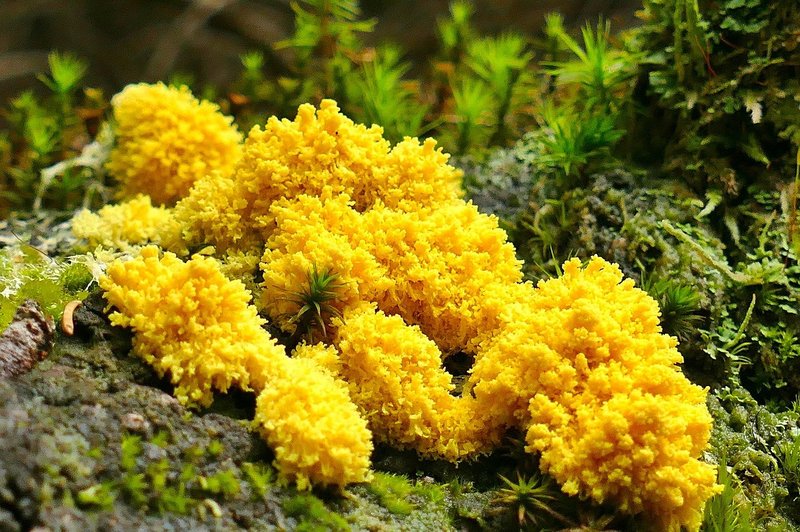What is yellow mold? You are probably wondering where it grows, and how to get rid of it. Fortunately, this article will provide all you need to know and critical information to share.
Yellow mold is one among thousand species of mold and turned out to be one of the common problems of most homeowners. It regularly thrives in the dark areas of your house, kitchen, walls, ceiling, bathroom, basement, and in any other humid spaces. Depending on the type of mold, it may be seen as dusty yellow patches from hushed appearance to a thick coloration.

What Exactly Is Yellow Mold?
Yellow mold is a microorganism that belongs to a large and diverse kingdom of fungi. It can reproduce through spores, which then travel in the air.
As long as there is moisture, organic matter, and oxygen, these spores can grow rapidly in certain amounts. Unlike yellow mold that occupies damp areas in your house, there is “yellow slime mold”, which is commonly found on decomposing soil surface areas. This one has a soft and gooey texture.
With its bright yellow color, you can easily spot these yellow mold as it can be seen anywhere in your house. This yellow mold is commonly found in wood surfaces, where they can feed on its organic materials. If your house is built with wooden materials, it is better to check once in a while if it is already infested with yellow mold to steer clear from future damages.
Yellow mold may spread into extensive surface areas and even in concrete floors, therefore eradicating it while it’s still small will prevent its reproduction and will surely lessen your home maintenance. After all, yellow mold is an unpleasant display in an otherwise beautiful home. Here’s a helpful guide for homeowners on how to use mold armor effectively to eliminate mold in your house.
Types Of Yellow Mold
There are various types of mold that gives off a yellow hue and can grow on various surfaces:
Aspergillus
It is one of the most recognized molds among fungal species that can generate yellow shade and has high adaptability in different environmental conditions. Usually, its fungal spores can trigger allergies, asthma attacks, and at worst, can result in acute lung infection.
Serpula lacrymans
This type of mold produces yellow to brown coloration. It is known for causing dry rot in building structures and spoils wooden surfaces. Like other molds, it reproduces through fungal spores and can colonize wooden structures in a certain amount of time.
Mucor
Despite its usual dark gray color, mucor can emit a yellow hue while it develops. It grows on a wide variety of organic matters like bread, fruits and vegetables, and countless decomposing substrates. In some cases, a person with a weak immune system can obtain mucor infection or mucormycosis.
Epicoccum nigrum
It is another type of mold that has high-adaptability and is known for being a secondary colonizer to an already infected substrate. It comes with a variety of colors such as yellow, orange, and brown, and is usually found in drywalls, ceiling, textiles, and other surfaces.
Is Yellow Mold Toxic?
Yellow mold is one among the various kinds of mold that can be seen everywhere. Despite its striking color, it holds toxins that are dangerous to human health depending on the level of exposure. A person with a weak immune system who had direct contact with yellow mold might feel different symptoms of toxic mold exposure.
Yellow mold holds a particular element called mycotoxin, which is a toxic compound inherent to specific mold variants. Being toxic, it can result in a variety of health risks from acute to long-term effects.
In particular, mucormycosis is a rare but serious infection brought by mold exposure. It mainly affects people suffering from various health illnesses as it causes decline in fighting bacterial infection.
What To Do Once You Inhale Yellow Mold?
In small amounts, there is nothing to panic about with yellow mold spores, especially if you’re healthy. All you have to do is eliminate it before it grows and becomes a problem.
If you are allergic to mold and inhale a large amount of spores, there is a chance that you could experience mild to severe health problems. So, here are the things to do once you inhale yellow mold spores:
- Stay away from the allergen, for there is a possibility that it could worsen the sensitivity it caused.
- Don’t panic. If you feel nasal sensitivity, do a nasal rinse immediately to flush yellow mold spores out of your nose.
- If an allergic reaction strikes, a decongestant spray can help ease the swollen nerves in your nose.
- Most importantly, the best thing to do is to visit your doctor for proper treatment and medication.
Conclusion
Being able to learn “what is yellow mold” brings benefits to most homeowners, especially when the problem arises. Knowing that yellow mold could impose health-risks, homeowners should become vigilant with this type of mold and learn how to annihilate it. After all, prevention would still be better than cure.
